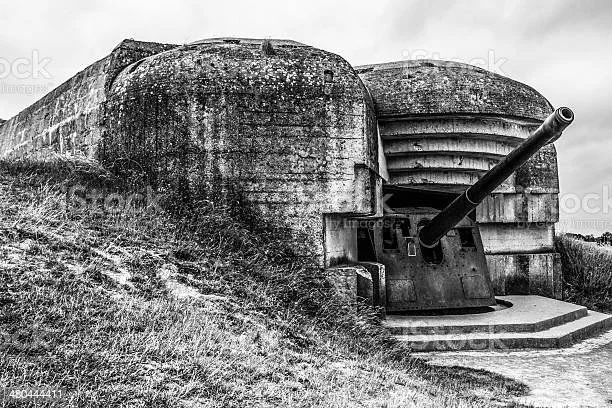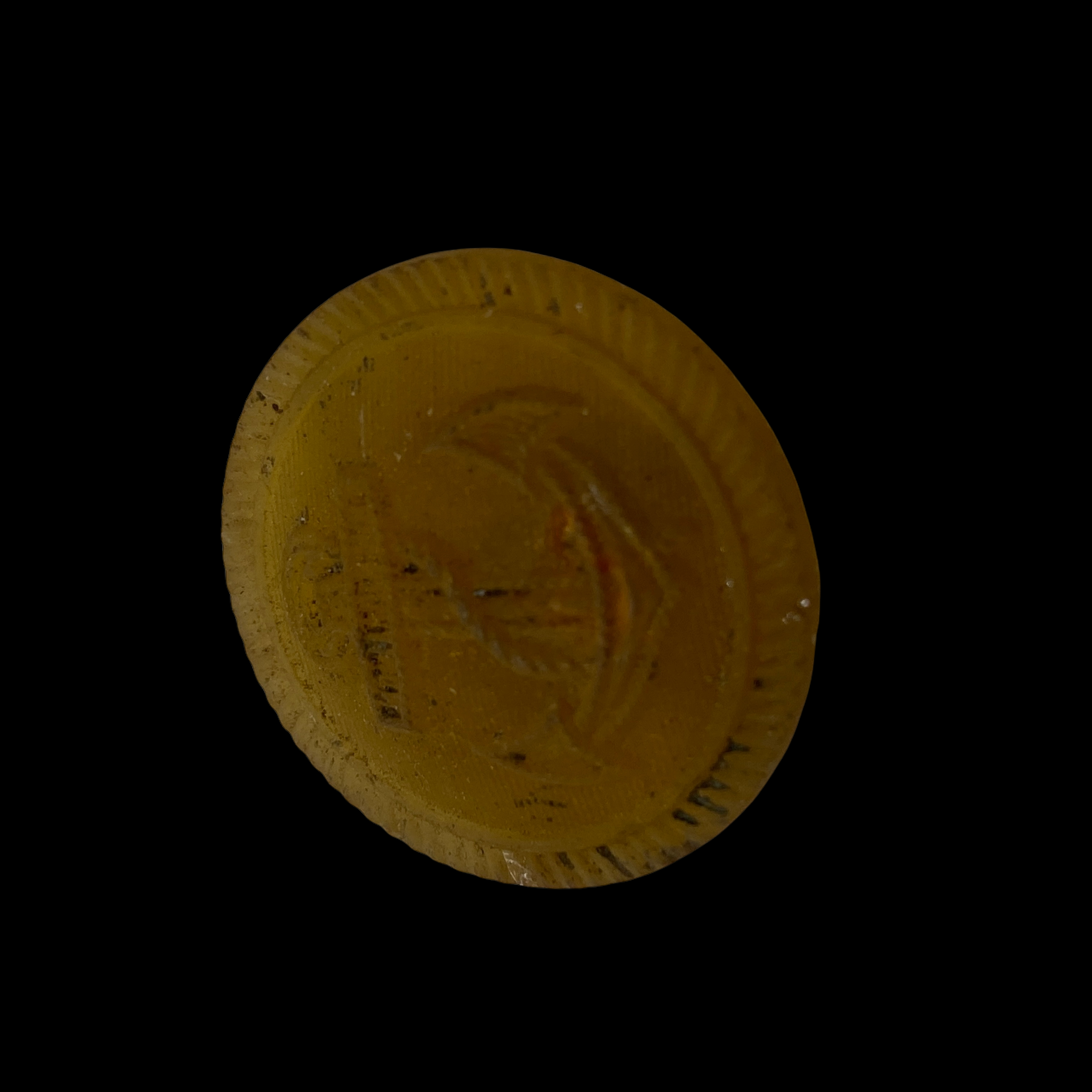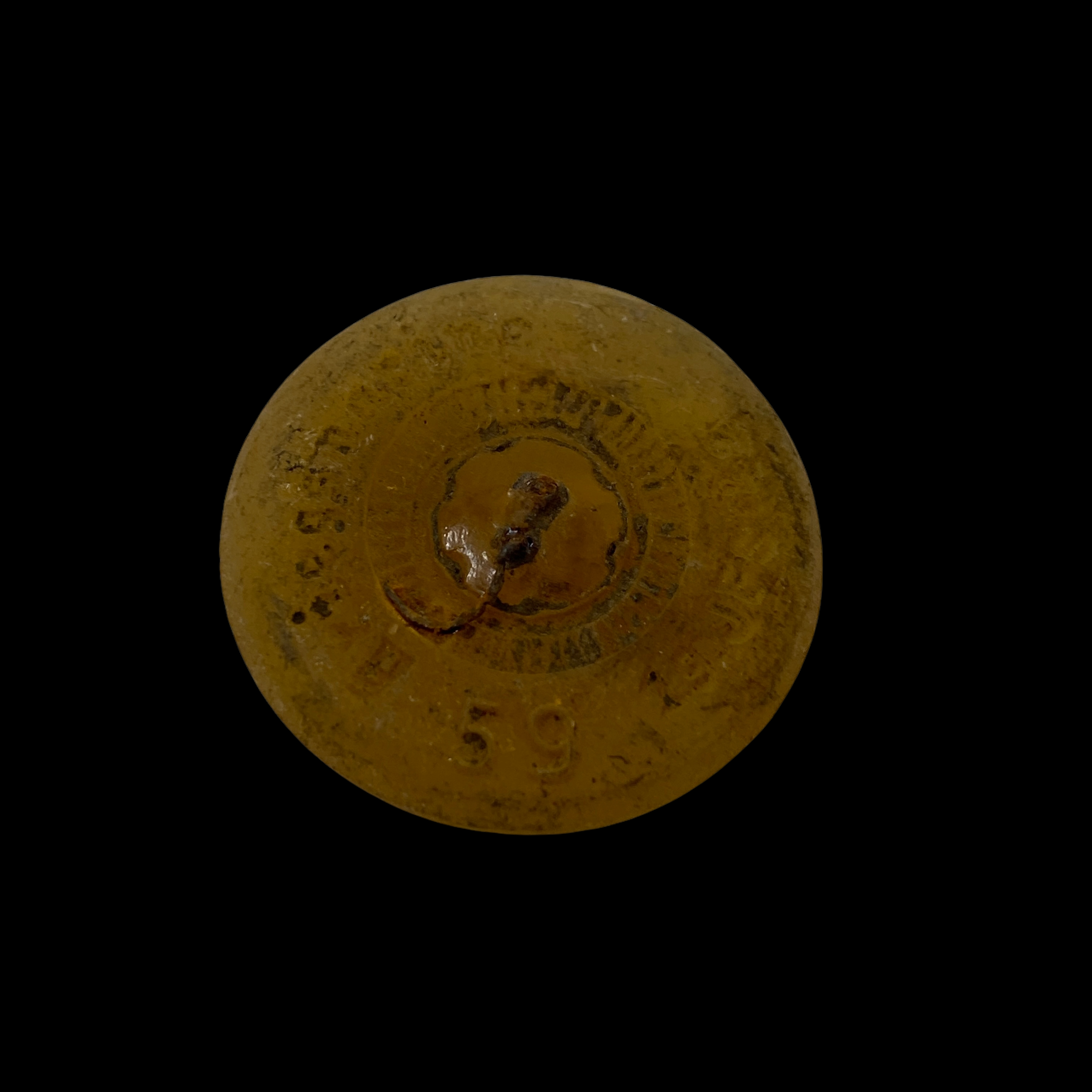RARE WWII 1944 D-Day Omaha Beach German Kriegsmarine Artillerymen Uniform Button Recovered German Bunker #03









RARE WWII 1944 D-Day Omaha Beach German Kriegsmarine Artillerymen Uniform Button Recovered German Bunker #03
Comes with C.O.A.
3 of 4
This incredibly rare and very historic WWII D-Day artifact is a German Kriegsmarine artillerymen uniform button recovered outside of a German bunker located on Omaha Beach. This incredibly preserved uniform button still shows the Kriegsmarine anchor and retains an amazing salty outer appearance. The German Kriegsmarine artilleryman that once wore this button was one of the defending Germans providing artillery support against the invading D-Day Allied forces.
Kriegsmarine against the Allies on D-Day:
In the spring of 1944, the German Kriegsmarine coastal artillery batteries in Normandy were led by two different commands: in the west, Admiral Walter Hennecke (based in Cherbourg), whose sector was from the Bay of Mont-Saint-Michel to the mouth of the Orne, and to the east the sector of Rear-Admiral Henning von Tresckow (based in Le Havre), whose sector was from the mouth of the Orne to the Somme region. German naval forces positioned along the Channel coast were placed under the command of Admiral Friedrich Rieve, whose command post was located in Rouen.
In the early hours of June 6, 1944, the numerous messages indicating the presence of paratroopers in Normandy as well as an allied fleet in motion off the Pas-de-Calais (diversion maneuver orchestrated by the Allies within the framework of Operation Fortitude worried Admiral Krancke, Commander-in-Chief of the West Naval Group (Marinegruppe West) from his command post. He then ordered the fleet of the Channel coast to be placed on alert at three o’clock in the morning, but at that moment the Allied armada was already off Normandy, awaiting daybreak to open fire.
On the coast, the Kriegsmarine artillerymen spotted dark silhouettes at night from the horizon: the flares fired to request the identification of these ships did not receive any answer. In Port-en-Bessin, the radar listening station spotted echoes from the open sea, indicating the presence of vessels at anchor: the 6th gunboat fleet (6. Artillerieträger-Flottille) was deployed but was silenced by the shots of the allied armada.
The coastal artillery batteries were under from fire the allied armada throughout D-Day. While the batteries in the Cotentin Peninsula (Azeville, Crisbecq) managed to record direct hits on American warships, the others were destroyed by the different bombings, unable to fire (such as Pointe du Hoc battery) or quickly under allied control. The battery at Longues-sur-Mer remained in operation from June 6 until late afternoon, but the British captured it the following day, along with the 184 soldiers in charge of its defense.
D-Day and Omaha Beach:
Omaha Beach linked the U.S. and British beaches. It was a critical link between the Cotentin Peninsula, also known as the Cherbourg Peninsula, and the flat plain in front of Caen. Omaha was also the most restricted and heavily defended beach. For that reason, at least one veteran U.S. Division (lst Infantry Division) was tasked to land there. The terrain was difficult. Omaha beach was unlike any of the other assault beaches in Normandy. Its crescent curve and unusual assortment of bluffs, cliffs and draws were immediately recognizable from the sea. It was the most defensible beach chosen for D-Day; in fact, many planners did not believe it a likely place for a major landing. The high ground commanded all approaches to the beach from the sea and tidal flats. Moreover, any advance made by U.S. troops from the beach would be limited to narrow passages between the bluffs. Advances directly up the steep bluffs were difficult in the extreme.
German strongpoints were arranged to command all the approaches and pillboxes were cited in the draws to fire east and west, thereby enfilading troops while remaining concealed from bombarding warships. These pillboxes had to be taken out by direct assault. Compounding this problem was the allied intelligence failure to identify a nearly full-strength infantry division, the 352nd, directly behind the beach. It was believed to be no further forward than St. Lo and Caumont, 20 miles inland. The V Corps was assigned to this sector. The objective was to obtain a lodgment area between Port-en-Bessin and the Vire River and ultimately push forward to St. Lo and Caumont in order to cut German communications (St. Lo was a major road junction). Allocated to the task were 1st and 29th Divisions, supported by the 5th Ranger Battalion and 5th Engineer Special Brigade.